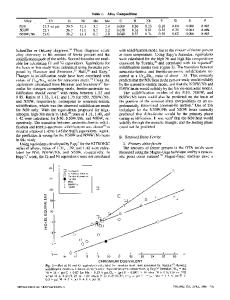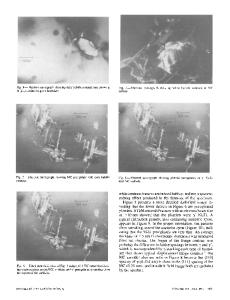Flow localization and shear band formation in a precipitation strengthened austenitic stainless steel
- PDF / 5,300,185 Bytes
- 12 Pages / 594 x 774 pts Page_size
- 49 Downloads / 383 Views
INTRODUCTION
A D I A B A T I C shear bands are the most severe manifestation of localized flow produced by high strain rate deformation. The shear bands are of concern in studies of ballistic penetration and high rate machining and forming processes. ~-5 Two phenomena are responsible for adiabatic shear band formation: (1) the conversion of about 90 pct of the work of plastic deformation to heat, and (2) the decrease in flow stress of a material with increasing temperature. 3 Thus, under conditions of restricted flow, large strains, and high strain rates, the heat generated by localized deformation cannot be dissipated and the resultant adiabatic temperature increase stimulates even further localized flow. As a result of this process, a shear band in which the deformation is much greater than in the surrounding microstructure is generated. The highly localized strain associated with adiabatic shear bands often leads directly to fracture. J-5 Two microstructural variants of adiabatic shear bands are recognized. 2'3 Deformed bands are a result of localized deformation and adiabatic heating where no phase transformation occurs. Transformed bands form under similar conditions, but in addition undergo phase transformation. Deformed bands are most frequently observed in nonferrous alloys while transformed bands occur most commonly in hardened carbon steels. Although the susceptibility to shear band formation becomes more pronounced the higher the strength of a material,4 little systematic work relating adiabatic shear band formation to microstructure has been performed. Precipitation hardening alloy systems in particular appear to offer a means to evaluate the relationships between structure, strength, and susceptibility to localized deformation. Recently, the use of a test specimen which permits an evaluation of localized flow during forging 6 has shown that highly localized flow is associated with deformation at temperatures where fine precipitates are stable. This behavior was especially pronounced in a precipitation hardening stainless steel, JBK-75, deformed in the temperature range where y' [Ni3(Ti,AI)] precipitation occurs. 7'8 M.C. MATAYA and M.J. CARR are both Research Specialists with Rockwell International, Energy Systems Group, Golden, CO 80401. G. KRAUSS is AMAX Foundation Professor with Colorado School of Mines, Golden, CO 80401. Manuscript submitted November 5, 1981. METALLURGICAL TRANSACTIONS A
The purpose of this paper is to present the results of an investigation performed to characterize the response of JBK-75 to hot deformation. Special emphasis is placed on identifying the effects of deformation above and below the y' solvus on the microstructure, fine structure, and the susceptibility of JBK-75 to localized flow and shear band formation.
II.
EXPERIMENTAL PROCEDURE
A. Material and Heat Treatment The material used for this investigation was a precipitation strengthened austenitic stainless steel alloy JBK-75, a modified A-286. The chemical composition of the alloy is given in Table I. The alloy w
Data Loading...











